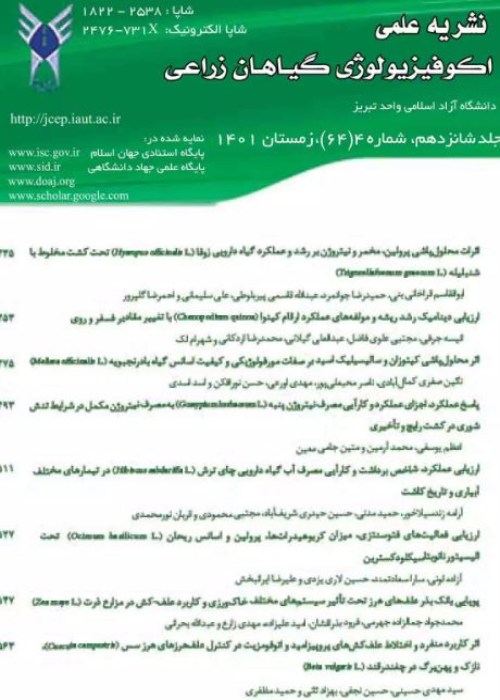Response of some Chickpea (Cicer arietinum L.) Varieties to Changes in Plant Density
Chickpea (Cicer arietinum L.) is commonly grown under dryland conditions during spring on soils that conserve moisture from the preceding season, in Iran. Seeding rate can have a major impact on production of chickpea. A field trial was carried out at Gerizeh Agricultural Research Station of Kurdistan (35°16’N 47°1’E), west of Iran during 2015-16 cropping season. The trial was carried out in a factorial experiment based on randomized complete block design (RCBD) with three replications. The factor "A" was plant densities, consisting of 15, 25, 35, and 45 plants m-2 and factor "B" was chickpea varieties (Kaka, Pirouz, ILC 482, and Samin). The effect of chickpea varieties and interaction between plant densities and varieties were significant on all measured parameters, except on number of seed per pod, plant height and height of first pod. Also, the effects of plant densities on seed yield, 100 seed weight, leaf chlorophyll index, protein content, plant height, and number of branch per plant were also significant. Results showed that an increase in plant density resulted in significantly higher seed yield per hectare. The mean yields indicated the sensitivity of "Samin" cultivar to high plant population, while it was, suitabilie to cultivar "ILC482" (45 plants m2). "Kaka" and "Pirouz" produce near optimum yields at medium plant densities (25 and 35 plants m-2). Mean yield comparison of cultivar × palnt density showed that cultivars "Pirouz", "ILC482" and "Samin" did not differ significantly in protein content but "Kaka" significantly produced higher protein content the three cultivars. Correlation coefficient for seed yield, number of pods/plant, seed weight, number of branch/ plant and plant height were positive and significant, while for seed yield, and height of first pod were negative and significant. According to the results of the this study Samin, with its large seed size and other desirable characteristics and plant population of 35 plants m-2 can be recommended for planting in Sanandaj and similar climatic areas.
- حق عضویت دریافتی صرف حمایت از نشریات عضو و نگهداری، تکمیل و توسعه مگیران میشود.
- پرداخت حق اشتراک و دانلود مقالات اجازه بازنشر آن در سایر رسانههای چاپی و دیجیتال را به کاربر نمیدهد.


